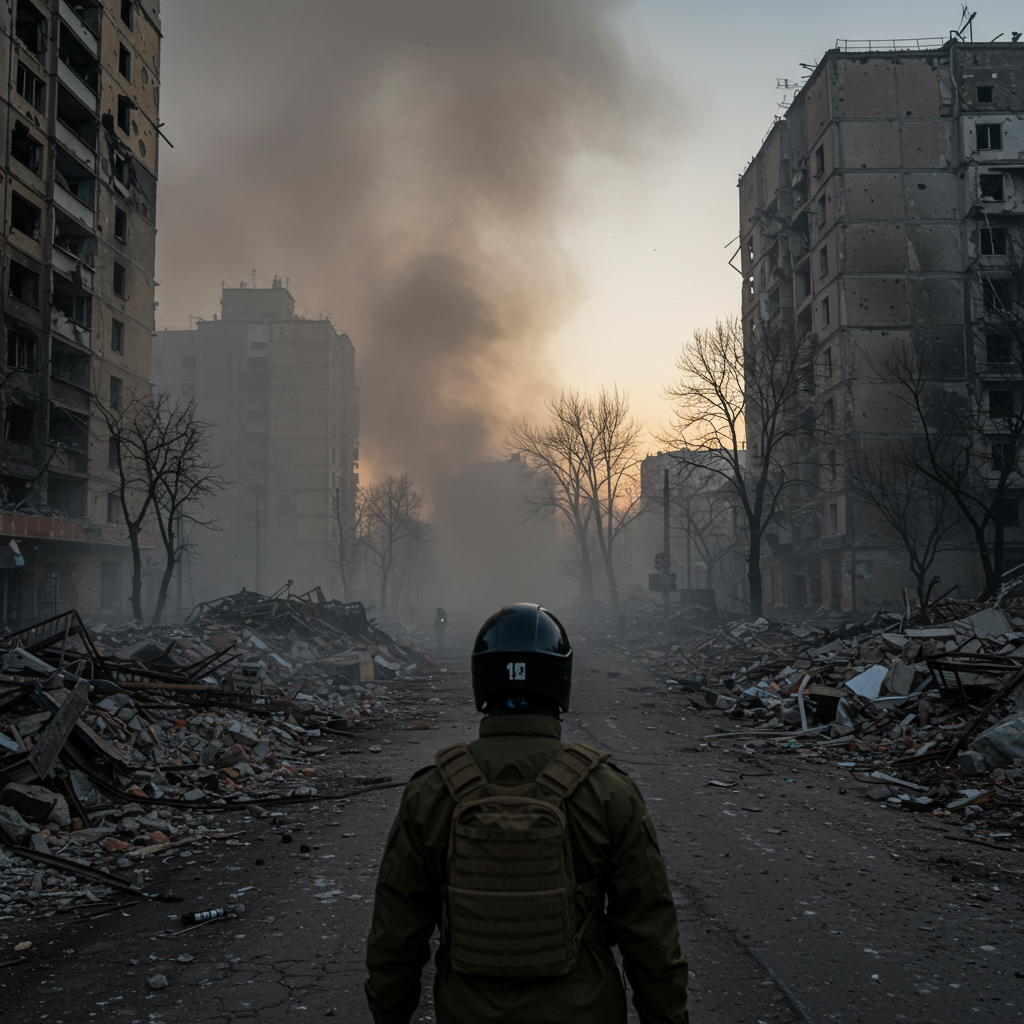Kyiv Endures One of the War’s Most Horrifying Attacks
KYIV, Ukraine – Ukraine’s capital city, Kyiv, reeled from one of the most intense and devastating Russian aerial assaults in months, which unfolded over nine harrowing hours overnight. The massive Russian attack on Kyiv, employing hundreds of drones and dozens of missiles, resulted in widespread destruction and a significant loss of life, with officials confirming over a dozen killed and more than 100 injured across the affected areas.
The brutal assault, described by Ukrainian President Volodymyr Zelenskyy as “one of the most horrifying strikes on Kyiv” and “pure terrorism,” primarily targeted civilian infrastructure, including numerous residential buildings. Rescue teams worked tirelessly through the night and into the day, digging through rubble in a desperate search for survivors.
Scale and Tactics of the Assault
The sheer scale of the Kyiv missile attack and Kyiv drone strike was immense. Ukrainian officials reported a torrent of aerial weapons, estimated by some sources to total over 440 drones and 30 missiles, though precise numbers varied across different reports. The barrage included deadly Shahed-type attack drones and highly dangerous ballistic missiles, including at least two Kinzhals.
Witnesses in Kyiv described a night filled with the constant crackle of air defenses, the distinctive moped-like buzz of drones, and the piercing screech of incoming missiles. Russia has increasingly employed tactics involving swarms of drones designed to overwhelm Ukrainian air defenses before launching harder-to-intercept ballistic missiles. By morning, thick plumes of smoke rose from parts of the city, and the air carried the acrid smell of burning debris, stark reminders of the night’s violence.
Devastating Impact on Residential Areas
The human cost of the attack was tragically high. At least 14 people were killed in Kyiv and one more in the southern city of Odesa, with casualty figures potentially rising as rescue efforts continued. Among the dead in the capital was a 62-year-old American citizen who suffered fatal injuries.
Much of the devastation was concentrated in residential areas. Interior Minister Ihor Klymenko confirmed that at least a dozen sites were hit in Kyiv alone, with a ballistic missile scoring a direct hit on a nine-story apartment building in the Solomianskyi district. The force of the blast caused an entire section of the building to collapse into a pile of rubble, trapping residents inside. Emergency services, aided by cranes, worked to evacuate the injured from damaged flats, facing the grim task of recovering bodies amid the wreckage. Other residential buildings in districts like Darnytskyi and Shevchenkivskyi also sustained damage.
Beyond Kyiv, regions including Odesa, Zaporizhzhia, Zhytomyr, Chernihiv, Kirovohrad, and Mykolaiv also came under fire, highlighting the widespread nature of the assault. Civilian infrastructure, including a kindergarten, a university dormitory, businesses, postal service branches, and even a freight train carrying grain, were also struck.
Further compounding the danger, Kyiv Mayor Vitalii Klitschko reported that emergency workers discovered cluster munitions at one of the strike sites. While banned by many nations due to their long-term risk to civilians, Russia is not a signatory to the treaty prohibiting their use.
Political Context and International Reactions
The timing of the attack was particularly notable, occurring as President Zelenskyy was preparing to attend the G7 summit in Canada. Foreign Minister Andrii Sybiha suggested the assault was deliberately timed to coincide with the summit, calling it a signal of “total disrespect” from Moscow towards countries calling for an end to the conflict.
At the G7, Zelenskyy planned to push for stronger sanctions against Russia and continued military aid for Ukraine. The diplomatic context around the summit was further complicated by reports of U.S. President Donald Trump’s early departure and his previously stated positions regarding the Russia Ukraine conflict, including suggestions that Ukraine might need to concede territory and calls for Russia’s readmission to the G7.
Zelenskyy used social media to condemn the assault vehemently, calling for a strong response from the international community. “Such attacks are pure terrorism,” he wrote. “And the whole world, the USA and Europe must finally react the way a civilized society reacts to terrorists.”
While Ukraine’s air defenses were credited with intercepting the vast majority of incoming drones and missiles, the sheer volume and nature of the attack underscored the ongoing threat faced by Ukrainian cities as the Ukraine war continues into its fourth year. Russia’s defense ministry, in contrast, claimed its forces had targeted Ukraine’s military-industrial complexes and that all designated targets were hit, while also claiming to have shot down numerous Ukrainian drones over Russian territory.
The deadly assault on Kyiv serves as a stark reminder of the brutal reality faced by Ukrainian civilians amidst the intensifying conflict, highlighting the urgent need for continued international support.




